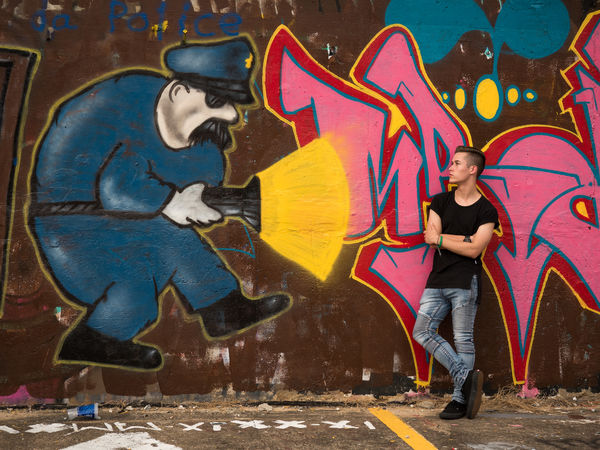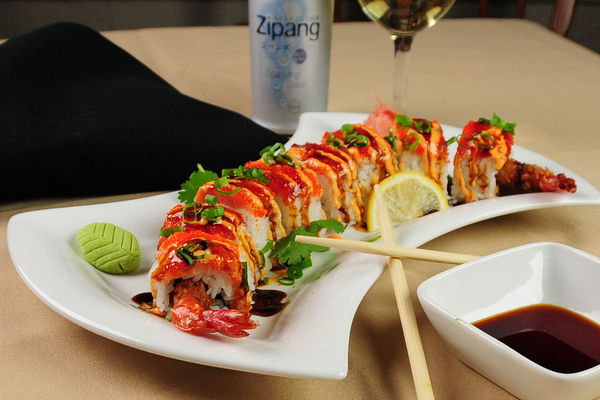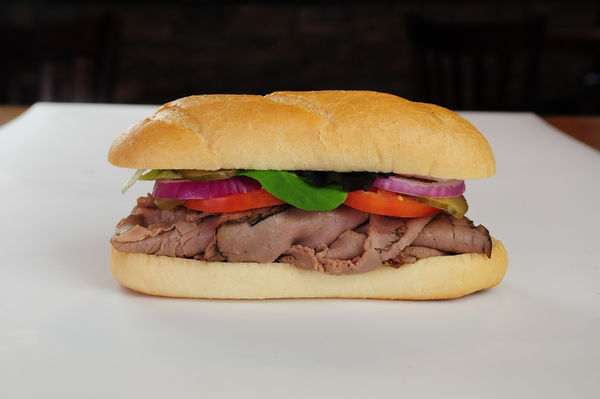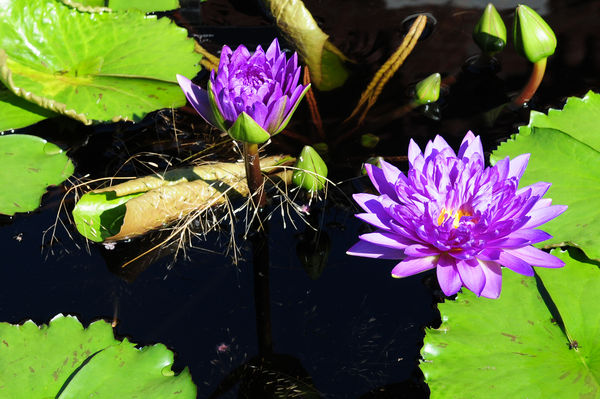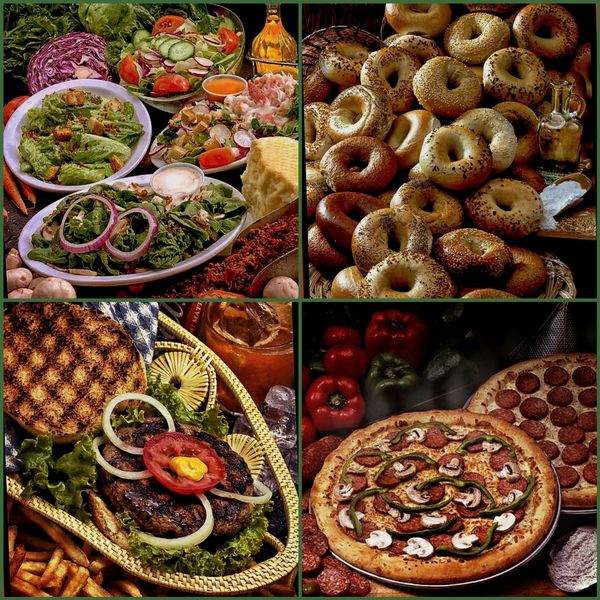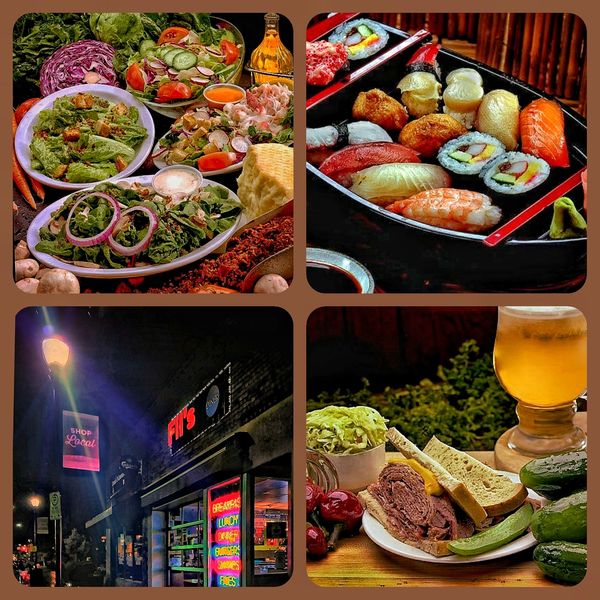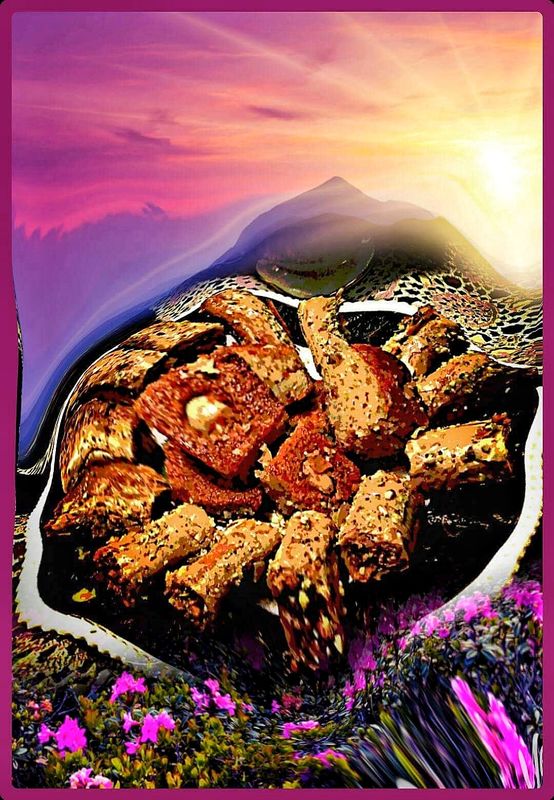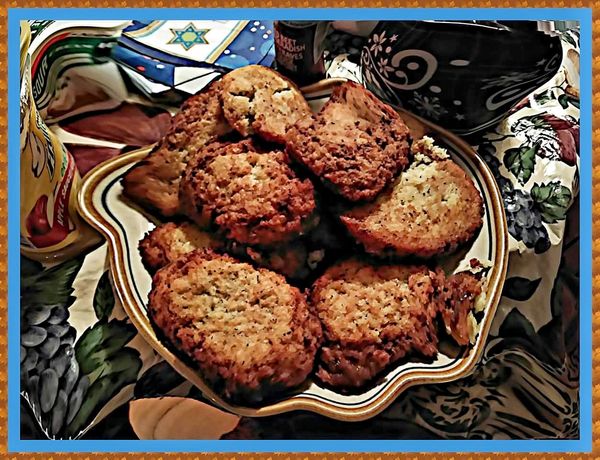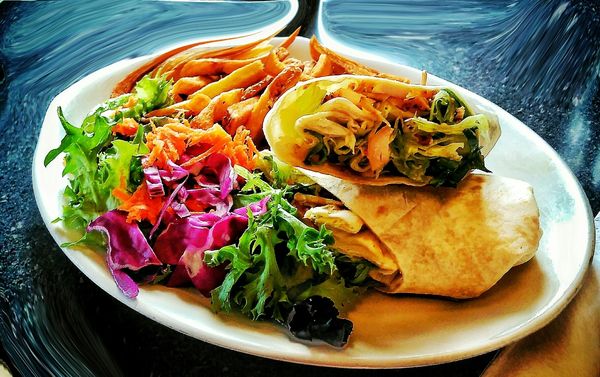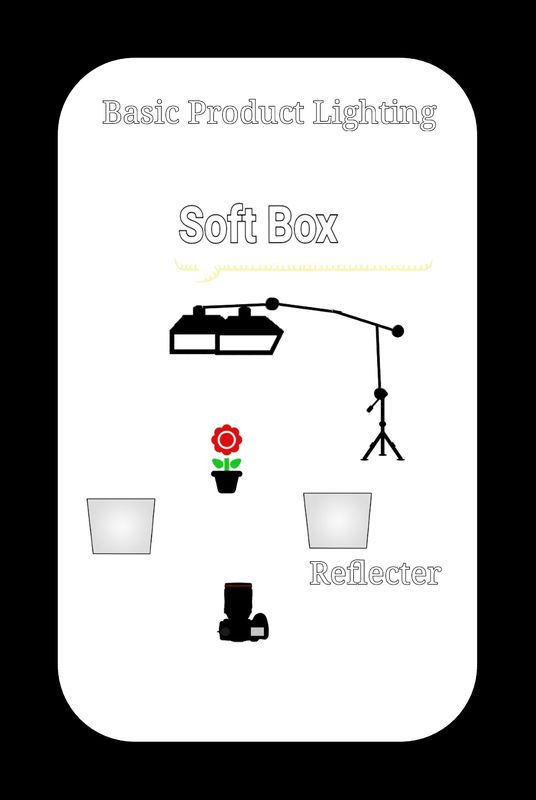FOOD PHOTOGRAPHY: cropped vs. FF?
Feb 16, 2018 11:44:02 #
I honestly do not think it makes a bit of difference whether you shoot with a cropped frame camera or a full frame camera. What does make a difference is the lens you use, how close to the food you want to be and what you want to end up in the photograph. When I bought my first digital camera years ago, a Nikon D70 as I recall, I had no idea about cropped frame and full frame cameras. I was used to shooting film cameras and ASSUMED they were all the same cameras. It was when I joined UHH and noticed people talking about FX and DX cameras that I began to realize there was supposed to be a difference. I now have a D800 and love it but had I not joined UHH I would still be happily shooting photographs with probably a DX cropped frame camera.
Put a lens on the camera, focus on the food and back up or move closer until the viewfinder shows what you want to see in the photograph. Click the shutter button and submit the photo to UHH so we can peruse your food photograph.
Dennis
Put a lens on the camera, focus on the food and back up or move closer until the viewfinder shows what you want to see in the photograph. Click the shutter button and submit the photo to UHH so we can peruse your food photograph.
Dennis
Feb 16, 2018 12:47:35 #
Thanks, Dennis.
I am awaiting a delivery from FedEx of a rental D810. Will actually use it in the same set-up as the D300S, and we will see. Will be using a Nikon 24-70, and the same studio lights. Mainly looking for a difference in clarity above anything else. That may be a factor of the lens more than the sensor type, but we will see.
The secret of any food shot, I think, is how the chef or food stylist makes it look on the plate.
My first digital camera was a Nikon D70 as well which is still in service with my daughter. She uses it as a back-up camera.
I am awaiting a delivery from FedEx of a rental D810. Will actually use it in the same set-up as the D300S, and we will see. Will be using a Nikon 24-70, and the same studio lights. Mainly looking for a difference in clarity above anything else. That may be a factor of the lens more than the sensor type, but we will see.
The secret of any food shot, I think, is how the chef or food stylist makes it look on the plate.
My first digital camera was a Nikon D70 as well which is still in service with my daughter. She uses it as a back-up camera.
Feb 16, 2018 13:07:04 #
JWCoop wrote:
I am essentially an hobbyist photographer, semi-re... (show quote)
You don't need a D810. You might want an upgrade from the 12mp D300s to a 24mp camera. But I shoot a lot of food with 16mp m4/3 Olympus. Or 24mp Nikon DX or FX. Doesn't really matter. You need enough light so you can shoot deep DOF at low ISO when needed.
Feb 16, 2018 13:24:20 #
JWCoop wrote:
Thanks for your replay. I have always enjoyed ph... (show quote)
Yes, that answers it well enough. I don't think you'll have any trouble photographing food that way for the Internet, menus, news articles, cookbooks, counter cards, table cards, or even posters and banners.
Here are some dirty little secrets that the camera industry does not want you to know:
Virtually any modern dSLR or mirrorless interchangeable lens camera with 12 MP or more is up to all those tasks. Anything more is just bragging rights. There will be some here who dispute that, because they have been brainwashed into thinking that pixel-peeping matters, but hear me out.
All you need for those uses is 3000x2000 to 4000x3000 pixels (6 to 12 MP). Higher resolution is nice to have for cropping, but once you get into that range, you can scale the image via interpolation with On1 Resize or even Photoshop's new option, to make prints up to billboard size. Viewed at the diagonal dimension of the print or a greater distance, you won't see any jaggies or other problems. The eye can't resolve more detail than that!
"300 dpi" is a *scanner driver* setting referring to how many samples per inch came from a print or piece of film. As such, it was (is) used to tell a page layout program how to scale the image when placing it on a layout. OR, "300 dpi" is a *printer resolution* referring to how many dots per inch are laid on paper (300 dpi is ridiculously LOW... like the original Apple Laserwriter or HP Laserjet). Both of those contexts primarily come from the graphic arts (CMYK++ litho or gravure world). Both of these uses for the resolution header value in a file are over three decades old!
Still, your use of "300 dpi" probably is referring to the file resolution header value in the EXIF table of a JPEG file or TIFF file. That is now a *meaningless* value in photography UNLESS you also specify the actual reproduction size, as in 300 *PPI* at 8x10 inches. That would be 2400x3000 pixels, which is what really matters, NOT the resolution header value! The smart thing to do is to think of resolution as the total number of horizontal pixels times the total number of vertical pixels coming from the camera.
The concept of PPI is very different from dpi. What it essentially refers to is, "How many pixels from the camera sensor are spread over every linear inch of output?" If you have 240, that's what is sometimes called "extinction resolution," if you are looking at an 8x10 inch print from about 13 inches. What this means is that at that threshold, the vast majority of humans cannot see the pixels, and neither can they perceive any additional detail when the resolution is raised to a higher value. Having more pixels to work with is welcome, but most often not a requirement (other than some mis-guided editor's rule!).
From that point, what matters isn't megapixel count, but all of the other features that make a camera useful, and all of the other ingredients that go into photography, such as lighting, composition, contrast, color, line, form, moment, styling, square horizon lines, etc. ad nauseam.
If you don't like your old D300s, trade it in on a newer body. You don't necessarily have to have a D810... A used D610 or D800 would be plenty for the task, as would the 24MP D7100 and D7200 models. But unless you're going to be doing a LOT of work, I wouldn't overspend.
I would feel comfortable doing food photography with what I have... It's Micro 4/3, a 16.05 MP Lumix GH4 with pro grade lenses. Here's a file I made yesterday. It is cropped slightly and resized from the original to make a 40x30 inch print at 240 PPI input to the printer driver. Viewed from 50 inches, the diagonal of the print, it is fine. Download and examine it at will, including the EXIF table. I made this from a raw file in Lightroom, using Photoshop to resize a TIFF intermediate and sharpen it. I'll make the final print from the 16-bit TIFF, converting it from ProPhoto RGB color space by printing it on an Epson P-series. This is an 8-bit JPEG in sRGB.
Feb 16, 2018 14:27:16 #
Yes, let me clarify. What was 300dpi was the final PDF printer's file which the printer's we used wanted for their printing process. The highest resolution I can get out of my D300S is 12.0 mpx. The 300 dpi does not apply to the photographs at all.
You are a lot more technically-experienced than I am, and I appreciate your advice.
In most cases I shoot with an infinity background, and really would like the background to go away. In other cases I have to be somewhat concerned with depth of field since I am shooting up close and personal.
I am going to send you three shots. The food shots were all shot in a restaurant, and were stylized by the chef or the store manager. The were all shot with my D300S DX manually-adjusted white balance at 800 ISO which the camera really likes for some reason. I used portable florescent lighting, and no strobe. The lens was likely a Nikon 14-24 / 2.8. I am not sure whether the auto-focus was set to front of the food, or to multiple focus points, but I suspect the front.
A third shot was made with the same camera, existing light, using this same camera. Lotus in a MO Botanical water garden. Nikon 24-70 / 2.8. It is a beautiful subject. I wonder though if the clarity would be better with the FF as compared to what you see.
What do you think?
You are a lot more technically-experienced than I am, and I appreciate your advice.
In most cases I shoot with an infinity background, and really would like the background to go away. In other cases I have to be somewhat concerned with depth of field since I am shooting up close and personal.
I am going to send you three shots. The food shots were all shot in a restaurant, and were stylized by the chef or the store manager. The were all shot with my D300S DX manually-adjusted white balance at 800 ISO which the camera really likes for some reason. I used portable florescent lighting, and no strobe. The lens was likely a Nikon 14-24 / 2.8. I am not sure whether the auto-focus was set to front of the food, or to multiple focus points, but I suspect the front.
A third shot was made with the same camera, existing light, using this same camera. Lotus in a MO Botanical water garden. Nikon 24-70 / 2.8. It is a beautiful subject. I wonder though if the clarity would be better with the FF as compared to what you see.
What do you think?
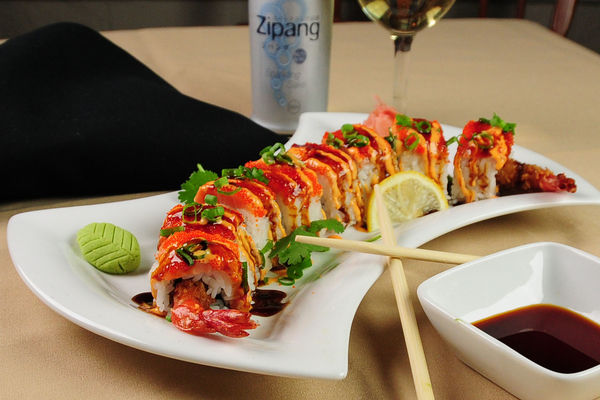
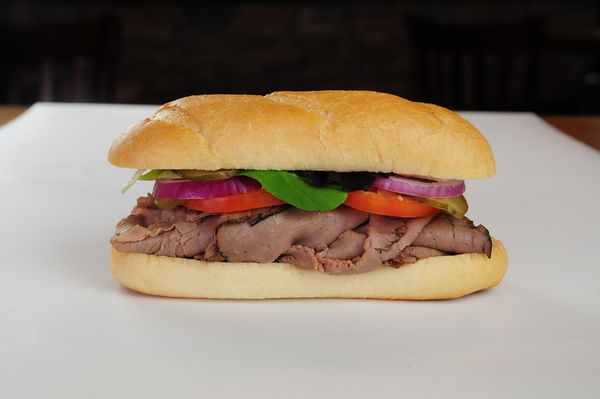
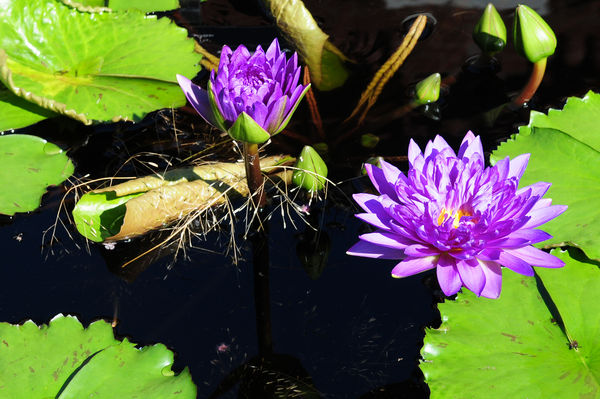
Feb 16, 2018 15:20:10 #
JWCoop wrote:
Yes, let me clarify. What was 300dpi was the fi... (show quote)
A couple of things about UHH protocol, first. When you are replying to another person's post, please use the "Quote Reply" button instead of "Quick Reply". Quick Reply is addressing the whole group.
Also, I can't really tell anything from your posted images, because they are not the original files. When attaching files, check the "Store Original" box. That will post an unaltered file.
Feb 16, 2018 15:27:10 #
burkphoto wrote:
A couple of things about UHH protocol, first. When you are replying to another person's post, please use the "Quote Reply" button instead of "Quick Reply". Quick Reply is addressing the whole group.
Also, I can't really tell anything from your posted images, because they are not the original files. When attaching files, check the "Store Original" box. That will post an unaltered file.
Also, I can't really tell anything from your posted images, because they are not the original files. When attaching files, check the "Store Original" box. That will post an unaltered file.
Okay. Thanks. Just learning how the system works.
Original files attached now.
Feb 16, 2018 15:55:06 #
I totally agree! As an example check out Christiane Calmbacher who does most of her food shots with a Nikon D5000. https://gurushots.com/photo/a77d3e3b1e910036264912eb855e1f71 Very inspiring and it challenges me to put my "eye" and delving into knowledge to make my pics better with what I have!
JWCoop wrote:
I think you missed my analogy. br br I was trying... (show quote)
Feb 16, 2018 16:13:27 #
deer2ker wrote:
I totally agree! As an example check out Christiane Calmbacher who does most of her food shots with a Nikon D5000. https://gurushots.com/photo/a77d3e3b1e910036264912eb855e1f71 Very inspiring and it challenges me to put my "eye" and delving into knowledge to make my pics better with what I have!
Very nice photo. Thanks!
Joe
Feb 16, 2018 19:00:30 #
JWCoop wrote:
Yes, let me clarify. What was 300dpi was the fi... (show quote)
Yes, they are all good shots. Truth be told though, unless told or read in the EXIF, no one would know what size of sensor took these. They could have been a FF or a 4/3s.
My opinion is keep your camera and use a good lens. And, enjoy your family.
Feb 16, 2018 19:46:04 #
All cameras and lenses aside, for the moment, it is important to realize that really outstanding, effective, appetizing, and well crafted food photography is the result of lighting savvy on the part of the photographer and expert food preparation and styling- it's a cooperative effort between the photographer, and the chef, cook or expert food stylist. In many cases food can be photographed in in totally natural condition as it is normally prepared and served but sometimes special cooking or "cosmetic" techniques are applied. The layout of the food on a plate, table pot, pan or tray is part of the photographic. Propis, the careful placement and lighting of silverware, utensils and containers factors in a well as as does background appropriateness.
The type of camera, lens and format should be in keeping with the final usage of the image. Most DSLRs with a decent lens will suffice for ultimate usages on menu cards, ads and articles periodicals, cook books, recipe cards etc. Things may become a bit more critical, as to acutance, where the production of large menu boards, large trans-illuminated displays, outdoor advertising like billboards or transit advertising or photomural-like decor in food outlets.
I do food and beverage photography in my commercial studio. A lot of the smaller format requirements are done on a full frame DSLR with a normal or slightly longer that normal focal length prime lens- macros are nice for closer shots. Some of the BIG jobs go to a digitized medium format camera fitted an accessory tilt attachment. In the old days, mauch of the work was done on 8x10 transparency.
So...here's the punchline: What with all thIS "hi-rez: business, pixel counting and worry about lens aberrations and diffraction, that everyone is so worried about, routinely carry my SMARTPHONE camera when I go out to do quotations and a few preliminary test shots.I also shoot with my phone if I see a nice plate or display a restaurant I am eating at. I will post a few images from the "phone". All I need is a light over the table and I can simulate one of my favorite studio setups- one softbox over the product- and slightly to the back and a flat reflector for fill.
Point- is if the dish is well made up, the lighting is right- a good DSLR with a zoom lens will do the trick for non-critical usages.
Obviously, If you do the work professionally and have to fill requirements for large format displays or high resolution lithographic printing, by all means, a full frame camera and shoot at 16 BIT RAW is preferable.
Oh- If any of y'all are interested in discussing food photography in more depth and detail, join me, here on the HOG in the "Commercial and Industrial Section"- it's kinda new and I have some tutorials planned that apply tho food and beverage work. Believe me, next time you go out to eat, grab you SMARTPHONE and a fold up sheet of aluminum foil (that's your reflector). Find a table with a light fixture above or sometimes a northlighted window, and you are good to go. Then mess around with some of those cool apps- it's good practice.Oh- you can do it at home as well!
The images will be posted in the next reply boxes...
The type of camera, lens and format should be in keeping with the final usage of the image. Most DSLRs with a decent lens will suffice for ultimate usages on menu cards, ads and articles periodicals, cook books, recipe cards etc. Things may become a bit more critical, as to acutance, where the production of large menu boards, large trans-illuminated displays, outdoor advertising like billboards or transit advertising or photomural-like decor in food outlets.
I do food and beverage photography in my commercial studio. A lot of the smaller format requirements are done on a full frame DSLR with a normal or slightly longer that normal focal length prime lens- macros are nice for closer shots. Some of the BIG jobs go to a digitized medium format camera fitted an accessory tilt attachment. In the old days, mauch of the work was done on 8x10 transparency.
So...here's the punchline: What with all thIS "hi-rez: business, pixel counting and worry about lens aberrations and diffraction, that everyone is so worried about, routinely carry my SMARTPHONE camera when I go out to do quotations and a few preliminary test shots.I also shoot with my phone if I see a nice plate or display a restaurant I am eating at. I will post a few images from the "phone". All I need is a light over the table and I can simulate one of my favorite studio setups- one softbox over the product- and slightly to the back and a flat reflector for fill.
Point- is if the dish is well made up, the lighting is right- a good DSLR with a zoom lens will do the trick for non-critical usages.
Obviously, If you do the work professionally and have to fill requirements for large format displays or high resolution lithographic printing, by all means, a full frame camera and shoot at 16 BIT RAW is preferable.
Oh- If any of y'all are interested in discussing food photography in more depth and detail, join me, here on the HOG in the "Commercial and Industrial Section"- it's kinda new and I have some tutorials planned that apply tho food and beverage work. Believe me, next time you go out to eat, grab you SMARTPHONE and a fold up sheet of aluminum foil (that's your reflector). Find a table with a light fixture above or sometimes a northlighted window, and you are good to go. Then mess around with some of those cool apps- it's good practice.Oh- you can do it at home as well!
The images will be posted in the next reply boxes...
Feb 16, 2018 19:50:37 #
Feb 16, 2018 19:55:03 #
Feb 16, 2018 20:31:50 #
Beautiful! I would love to learn from your expertise.
E.L.. Shapiro wrote:
Studio stuff.
Feb 17, 2018 00:48:01 #
JWCoop wrote:
Okay. Thanks. Just learning how the system works.
Original files attached now.
Original files attached now.
Looks like the sushi is front-focused and needs more depth of field. This is a low resolution file, just 1800x1200 pixels. If you recorded it at full resolution and cropped, get closer and fill the frame. If you recorded it at medium resolution, don’t do that. There’s not enough here.
Not sure about the background elements - that black cloth seems out of place.
The sandwich has some of the same issues. Watch horizon lines, background elements, focus point, and angles. A slightly steeper angle would have helped. Curving seamless background paper upward in the background would have helped.
All three of these could have benefited from raw capture and post-processing to control highlights, shadows, sharpness. The D300s was not loved for its JPEG highlight retention in daylight. But raw files can be tamed nicely in post.
Classic product lighting uses a large, overhead, backlight source with front reflectors.
With an APS-C camera, watch your aperture. Try to avoid f/11 and smaller apertures. Use a DOF calculator on a smartphone to calculate depth of field for a given focal length, aperture, and distance. Use DOF to draw the viewers’ eyes to the key focal points in the dish.
If you want to reply, then register here. Registration is free and your account is created instantly, so you can post right away.


